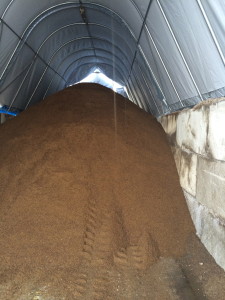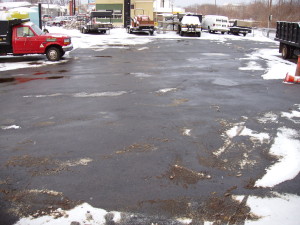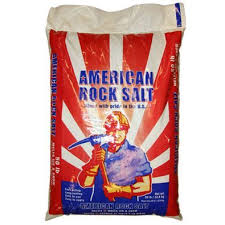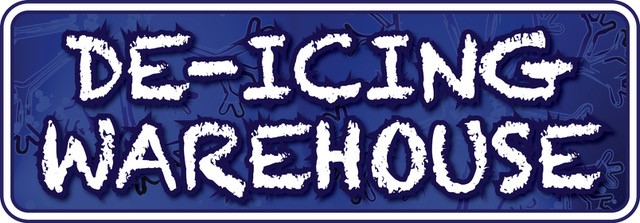Original Magic Treated Salt starts out as ordinary rock salt and is then treated with a liquid, agricultural by-product of the distilling process blended with magnesium chloride. This patented liquid is trademarked as Original Magic. This combination process results in what we call “Original Magic Treated Salt.” It is available in bulk and 50b bags for the contractor.
BULK
Bulk Treated Original Magic
- Working temperature of -35f
- 35-50% less salt needed compared to rock salt
- Less applications needed
- Concrete & Landscape friendly
- Reduced Black Ice
- 90% Less corrosive than rock salt
*LOADING AVAILABLE DURING STORMS*
Your salt pile can be sprayed to create Original Magic Treated Salt!
We also sell BULK ROCK SALT and a Sand/Salt/Liquid Mix by the yard.
BAGS
Original Magic 50 lb. Bags
- Working temperature of -22f
- Recognized Environmentally Green Product
- Pet Friendly
- Great Long Lasting Residual
- Less applications needed
- Reduced black ice
- It’s concrete & landscape friendly
- Does not track like other products
- It’s 80% less corrosive than salt
- Safer for all surfaces
- Only 1/4-1/3 cup per sq yd. needed

Original Magic also exhibits a residual effect, making it last longer than ordinary de-icers. Original Magic’s effectiveness allows you to use 30 to 50 percent less product when compared to Rock Salt. Original Magic Treated Salt is biodegradable, environmentally friendly, pet-friendly, and less corrosive than traditional treatments.
Original Magic Treated Salt is safer to use on concrete and other hardscape products, it’s less corrosive, and will not harm curb-side grassed areas or plants when used as directed.
Try it today and see why everyone is talking about Original Magic!
Calcium Chloride Pellet 50lb Bags
- Melts ice and snow down to temperatures of -25°F
 Halite Bagged Rock Salt 50 lb. Bags
Halite Bagged Rock Salt 50 lb. Bags
- Works to 18 degrees
- Available 49 bags per pallet
- Fresh, Course and DRY!
- Picked up or delivered
While halite or rock salt does not chemically attack concrete, it may affect damage to concrete from freeze-induced expansion pressures by increasing the number of freeze and thaw cycles.
Wondering About Concrete Damage From Rock Salt?
It is common knowledge that rock salt will damage concrete sidewalks and driveways. However, what is not well known is that ALL ice-melters can damage concrete. This will explain how and why it happens, and what can be done to help prevent this damage.
The Freeze/Thaw Cycle
Everyone knows that water freezes at 32 degrees and forms ice or snow. How ice melters work is to lower the freezing point of water below 32 degrees. Rock salt will lower the freezing point from 32 degrees to 25 degrees, and Calcium chloride will lower the freezing point to –25 degrees.
Why this matters is that rock salt will change (melt) ice and snow back into water when the temperatures are between 32 and 25 degrees. However, when the temperature continues to fall and gets below 25 degrees the water re-freezes. Then when temperatures rise again to above 25 degrees, the rock salt residue changes the ice back into water. This is called the freeze/thaw cycle.
Why Damage Is Caused?
Although concrete sidewalks and driveways look very solid, concrete is actually a porous material that can and does absorb water. In cold weather the snow or ice is a solid and does not penetrate into concrete. But, when ice melters are applied to snow or ice, the melting ice/snow is turned into a salt/water mix and is absorbed by concrete.
Additionally, rock salt is hydroscopic, which means that rock salt actually attracts more water to it. So when ice is melted by rock salt and changes into a salt/water mix, it enters the concrete with approximately 10% more water than would normally enter concrete. When temperatures fall below 25 degrees, having this extra water in concrete causes a large problem. In these colder temperatures, the extra water in the salt/water mix starts to re-freeze and expand, but the additional water adds additional ice in the concrete, which in turn adds additional hydraulic pressure on the concrete.
When the hydraulic pressures of the re-freezing water exceeds the compression strength of the concrete, damage can occur. Additionally, the more often the freeze/thaw cycle happens, the more likely the damage is to occur. This being said, a one-time use of rock salt is unlikely to cause damage.
What Damage Looks Like:
The freezing water inside the concrete creates so much upward pressure on the concrete, that the smooth, non-aggregate top of concrete can “pit” or spall. This damage can be in large sections or in scattered smaller spots. When the smooth finished texture of the concrete is gone, these damaged spots show the aggregate mixture of the concrete that is below.
All Concrete Is Not The Same
All concrete is not created equal. The types of concrete that are most susceptible to spalling damage is freshly poured concrete and low strength concrete. Newly poured concrete, which is still holding a high water content already, usually needs around 30 days to “harden off” before rock salts can be used.
Low strength concrete mixtures can also be at greater risk from spalling. Concrete mixes with a compressive strength of less than 3,500 pounds per square inch could also show more spalling damage than other concretes. Low strength concretes also have a higher porosity, allowing more of the damaging salt/water mix to enter the concrete.


